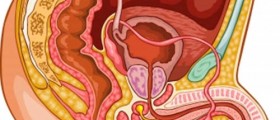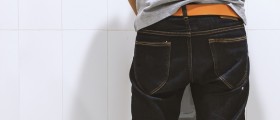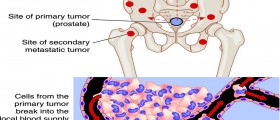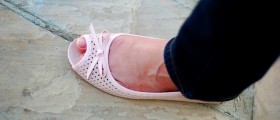Loading...
Thanks for ur support!
Dr. Das called me the first day he returned from his vacation , so I was quite happy about he was responsive to my suffering.
.
He gave me two choices, just the cystoscopy but no clearing of blockage or with blockage clearing. Obviously, I selected the second option. Who wants to suffer two times and pay twice?
The earliest date I could do the blockage clearing is Feb 25th.
It seems that if the blcoakage is at the bladder neck, the hospital stay is still overnight but the catheter will be removed the next morning whereas if the blockage is in the urethra then the catheter will stay on for 72 hours (3 days). My local urologist wants the catheter to be on for 5 days!
So urethra blockage requires long catheter time. But I am not sure if the urethra stricture clearing is a more serious surgery or the catheter needs to be there to set the expanded urethra diameter so that it won’t shrink down in size.
Loading...
Loading...
For some urologists, I could only talk to their nurse to relate messages back and forth . Thus I appreciate Dr. das called me the first day he was back and also not at 5pm just before he left his office. He seemingly was not in hurry too. When the patient is having a serious complication and expects help from his doctor, dr. Das responded in a way that make me feel I am in good hands.
Loading...
That certainly is atypical and very reassuring for sure DL. Speaks volumes to his level of caring for his patients.
Loading...
DL I'm sorry for the short delay in replying to your concerns. The good news is that I discover, on checking the paperwork, that I had the corrective surgery in September 2015 rather than the "18 months ago" that I stated - how time flies at my age! So I'm still functioning normally nearly three and a half years later. I had a Urethrotomy to correct the problem rather than Dilation. This was in the UK so I don't know what the options are in your territory. I was supposed to have the catheter in for 48 hours but when I returned home I suffered severe bladder spasms so called the surgeon and he suggested it was removed immediately so he sent a community nurse out to me and she removed the catheter. So I had the catheter in for about 30 hours, having had the op at midday on the Saturday and being discharged at around 1500 on the Sunday. I hope this is helpful to you but I will check this site regularly and would be happy to help further if I can. Best wishes, NS.
Loading...
Sincerely thank u for taking the time to reply my questions. On this thread this is the first account of treatment and result for urethra stricture.
If I could have ur result of stricture free for 3.5 years, I would be a very happy man.
However, paper cited below says my luck will be slim.
Looked up Urethrotomy on the internet and found the following paper.
ncbi.nlm.nih.gov/pmc/articles/PMC5308031/
Direct visual internal urethrotomy: Is it a durable treatment option?
Dilip Kumar Pal, Sanjay Kumar, and Bastab Ghosh
“Results:
A total of 186 patients were included in this study. Stricture-free rates after first, second, and third urethrotomy were 29.66%, 22.64%, and 13.33%, respectively.
Conclusions:
Although DVIU may be a management option for anterior urethral stricture disease, it seems that long-term results are disappointing.”
..................
“Urethral stricture refers to the narrowing of the urethral lumen resulting from fibrosis that affects the urethral epithelium and underlying corpus spongiosum. Urologists frequently encounter this disease in day-to-day practice. These patients mostly present with obstructive symptoms, urinary tract infection, or urinary retention. The treatment options for managing urethral strictures include minimally invasive methods such as direct visual internal urethrotomy (DVIU), urethral dilatation, or open reconstructive urethroplasty. DVIU is appealing both for treating urologists and patients because of its relative ease of performance, minimal resource requirements and simplicity in not requiring expertise in urethral reconstruction, can also be performed as an outpatient basis in the office (under local anesthesia), requires minimal recovery time, and has a low-cost burden to the patient. Urethral dilatation is easy to perform with minimal resource requirements and simplicity but higher chances of recurrence. Urethroplasty requires expertise in urethral reconstruction, longer recovery time, and high-cost burden to patient though with better success rate than DVIU as claimed in previous studies.
Recent surveys conclude that the most urologists perform DVIU as the initial management of urethral strictures.[1,2,3] According to the previous studies, the claimed success rates vary within a very wide range from 8% to 95%.[4,5,6,7,8,9] However, majority of the studies lack long-term follow-up.
We evaluated the long-term success rate of direct vision internal urethrotomy as a treatment for anterior urethral strictures.“
“Follow-up data of all the adult male patients, underwent DVIU from January 2009 to January 2014 for the treatment of urethral stricture, were retrospectively evaluated. ”
“As the departmental protocol, DVIUs were performed in single stricture, located in bulbar urethra, 60 years or having severe comorbidities), DVIUs were also performed in single stricture up to 2 cm length and multiple stricture (two in number with length of each stricture segment not more than 1 cm). Internal urethrotomies were performed by five consultant urologists in this period. A standard Sachse urethrotomy knife was used with 21 Fr Urethrotome under the guidance of a 0.035-inch guidewire. In all cases, a single 12 o'clock incision was made until the full thickness of the fibrous scar was divided. Complete incision of the stricture deemed achieved once the 21F sheath is passed freely into the bladder. After the procedure, an 18F Foley catheter was placed. Patients were discharged with an indwelling catheter on the 1st postoperative day. Oral fluoroquinolone was given until the catheter was removed. The catheter was usually removed after 5 days on an outpatient basis. After 7 days of catheter removal, patients were instructed to do self-urethral calibration by 18 Fr catheter at a frequency of every day for 1 month, alternate day for 3 months, then once in a week up to 6 months, and thereafter once a month.”
Loading...
My future looks grim. My situation is worse than before HoLEP.
https://www.verywellhealth.com/urethrotomy-4174265
“Risks
The long-term success rate of urethrotomies is pretty low and many people who have one will still have to undergo subsequent surgeries as there is a high risk that the urethral stricture will reoccur. A medical study reports that in the short term (less than 6 months), success rates for urethrotomies are about 70–80 percent. However, after one year, this goes downwards and the rates of recurrence start to approach 50–60 percent. At the 5 year mark, recurrence shoots up to about 74–86 percent.”
Loading...
Hello again DL. My consultant told me, after the cystoscopy to examine the stricture, that it was quite high up in the urethra and that he expected a greater than 40% chance that it would not recur. When he came to see my in the recovery room he said the stricture had been very short in length and the prospect of needing a repeat procedure was less than 50% in his opinion. Certainly after 40 months I haven't noticed any flow reduction so I'm keeping my fingers crossed going forward. I must say I was rather shocked to read the study extract that you quoted and its very low success rates. I today found an NHS (our Medicare equivalent I suppose) hospital website here in England which also states in general a 40% chance that the procedure will not need repeating.
I understand that your consultant is one of the leading men in his field, as was mine here in the UK, so your chances of a successful outcome might be better than average.
On the subject if my original HOLEP this consultant had been due to carry it out and I checked his experience levels carefully - he had carried out hundreds of HOLEPs. On the day of the op I was confronted by one of his junior colleagues who was deputising for him. I considered calling it off until the main man was available but went ahead. I ended up with a stricture.
Try not to be too downhearted as I'm sure you are in very good hands. Keep in touch.
With very best wishes, NS
Loading...
Urethra Strictures Post HOLEP & Vitamin C Use:
I just thought I would throw a thought out there that has been nagging me for a while.
As I previously posted I have experienced a significant reduction of flow rate since my HOLEP surgery. I am a still able to void without issue, but it is a much slower process.
Several years ago when my wife visited a top notch cosmetic surgeon she was strictly prohibited from taking any Vitamin C supplements because apparently it contributes significantly to scar tissue formation. As health care professional we are also finding that some of the younger general and orthopedic surgeons are not prescribing Vitamin C in order to promote healing.
I have always taken Vitamin C supplements --- especially in the cooler months when everyone seems to always have some sort of bug. As it turns out my HOLEP surgery was in January and of course I took my usual Vit C supplements plus some additional Airborne to ward off evil spirits, since I was in the city and hospital environment . I must say that my bleeding subsided very quickly, and my other post-op symptoms disappeared equally fast.
So, now I am nagged by the thought that perhaps I have inadvertently contributed to this new complication. Did the Vitamin C use contribute to excess scare tissue formation?? We have found this is a difficult subject to discuss with most doctors because most are not schooled in the use of supplements and alternative therapies.
I was wondering if those of you, who have experienced or are experiencing reduced flow rates due to strictures, ---> Do you use Vitamin C supplements?
Just some food for thought.
Loading...
I sincerely thank you for sharing ur personal experience on urethrotomy, a term which I didn’t know it existed until u told me. My urologist’s assistant told me today that the surgery is called Cystourethroscopy with Direct Vision Internal Urethrotomy (CPT code 52276). I believe the surgeon will use the holmium laser used in HoLEP to cut the scar instead of a knife.
Without recurrence and reduced flow 40 months after urethrotomy is the best case benchmark which I will use to compare my with own result. It makes sense that a shorter stricture has higher chance of success for stricture free.
40% chance of success is much better than
“A total of 186 patients were included in this study. Stricture-free rates after first, second, and third urethrotomy were 29.66%, 22.64%, and 13.33%, respectively.”
I read it somewhere that scar could form somewhere from 3-6months.
For me, scar formation seemed to become noticeable after week 5 post HoLEP. It was then I noticed my flow seemed to be slower and the penis had slight pain. Perhaps, it took that long for the scar to be thicken to a degree that started to impede flow. By week 10 my Qmax was reduced by a factor of 10 to 2cc/sec. Perhaps the scar had reached maximum thickness. It seems if after 6-8 months, the patient has no stricture or stenosis then he is home free, for there is no reason why scar will form unless the urethra is injured. Recurrence may due to the scar removal surgery as scar will form due to new injury caused by the surgery, instrument and/or catheter.
Just wondering if u remember when did u notice that u had stricture.
Yes, my HoLEP urologist has 20 years of experience. I suspected it was the catheter that caused the stricture as I had it on 5 days. Also during the 2 hours car ride to go back home, there was a lot of vibration which caused the catheter to rub against the urethra and bladderneck.
Loading...
Interesting. I did not take vit c after holep. I believe my stricture may be caused by the catheter.
Loading...
Your upcoming corrective surgery sounds more sophisticated than mine which I'm pretty sure involved a knife cutting the scar. My HOLEP was carried out on 27th June 2015 and at first my flow rate was greatly improved but had declined gradually after about 6 weeks and became concerning after another 4 weeks when my Qmax fell to around 5cc/sec. I spoke with the consultant's secretary and she arranged an appointment with him for 22nd September when he carried out a cystoscopy and confirmed a stricture had formed. My Qmax was 4cc/sec at that appointment I think. I had my pre- op assessment two days later and the urethrotomy was carried out two days after that. I don't think the catheter was responsible for my stricture, rather that it was likely physical damage caused by one of the instruments the original surgeon introduced into the urethra during the HOLEP.
Good luck with your upcoming procedure and hoping that your outcome is as good as mine seems to be - although it has got me wondering if I'm yet completely safe from a recurrence.
Very best wishes, NS
P.S. I don't take vitamin supplements and never have.
Loading...
Thanks again for your support and well wishes.
Below is a summary of symptom, treatment and chance of success based on both of our experience about having urethra stricture (or bladderneck stenosis) after HoLEP:
1) by about week 5 urine flow rate is noticeably reduced and becomes very concerning
2) by about week 10, the peak urine flow rate, Qmax, is reduced by several folds to about 2-5 cc/sec
3) a cystoscopy is needed to confirm the urethra stricture and/or bladderneck contracture. X-ray can also be used to see the length of stricture or blockage
4) dialation or urethrotomy is commonly used to treat the stricture. The former uses different diameter tubes to expand the urethra stricture whereas the latter uses either a knife or holmium laser to cut through the scar which blocks the urethra. Bladderneck stenosis can only be treated by urethrotomy. The procedure is cut opened the scar at the bladderneck, the so called bladderneck incision BNI.
NS had his urethrotomy with a knife but mine will be with a laser. laser seeems to have an advantage because it coagulates while it cuts.
5) urethrotomy has a better chance of success than dialation and is thus recommended. Urethrotomy with laser is the better option. This makes sense. The former cuts away the scar while the latter uses mechanical force to expand the disorder the scar.
6) urethra stricture recurrence is the nightmare. If the body is prone to generate scar after holep, then it makes perfect sense it will generate scar again because urethrotomy is similar to HoLEP. No mystery at all. The worse nightmare is that when the scar reoccurs, the succeeding urethrotomy will have less chance of success than the previous one. This is similar to injuring an old wound, which hurts the body more and makes the wound harder to heal.
7) the success rate of urethrotomy is about 40% according to a British hospital and about 30% according a rigorous medical scientific study on 186 patients
8) since scar will definitely show up within 6 month, if after 6 months after urethrotomy, the peak urine flow Qmax is not reduced, then there is no reason scar will appear again unless there is new injury to the urethra and the urethrotomy was successful.
Loading...
Very best wishes, NS
Loading...

















